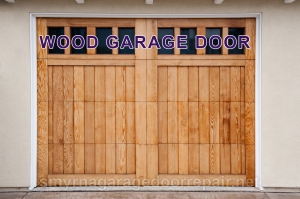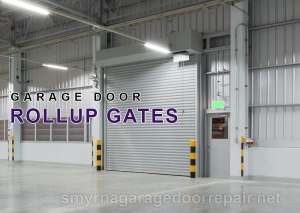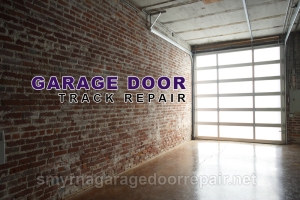If your garage door is out of whack, there are numerous causes. Some are clear-cut, and some are complicated. Let’s take a look:
Problems and Solutions
Garage door won’t open? If you have a garage door that won’t stay open, the springs are probably acting up, not staying contracted as they should. Adjustment may be possible, by shortening the spring cables, which will add more tension on the springs using a bracket on the cables. If your garage door has one or two torsion springs, one or both could be broken. Don’t ever attempt to adjust your garage door, unless you’re an engineer! If operated improperly, a garage door spring can cause injury, and even death. The drums, cables, and bottom brackets may need to be adjusted. Or, it’s possible that the springs must be replaced. In any case, it’s wise to hire a trusty professional. If you live in Smyrna, Georgia, consider choosing a dependable local garage door company such as Smyrna Garage Door Repair.
Garage door won’t close? Your garage door has a photo sensor eye on either side. Between them is an invisible beam, which, when broken, keeps the door from shutting. See if they’ve become misaligned or grimy. Depending on which brand and style of sensor you have, if the light’s blinking, there’s something wrong. Or, if you have sensors with red and green lights, the red one normally means it’s not functioning correctly.
Another sensor issue can be the wiring. Investigate the connections from the sensors making sure the wires aren’t coming loose or hindered by corrosion. Another possibility is that there’s a short in the wiring, which can come from a staple used during installation; vibrations over time can eventually cause a disconnect. Also, wires can become stretched, resulting in a disconnection.
Does the garage door opener run, but the garage door won’t move? In case of a power outage, your garage door opener comes with a disconnect switch, allowing you to manually shut or open the garage door. The switch, usually attached to a knob or rope, can unintentionally come unhooked. What to do:
1 Open or shut the garage door all the way.
2 Reattach the hook securely.
3 Now, with the transmitter, try opening or shutting the door again, and this time it should work.
The transmitter batteries might be low. Perhaps all you need to do is replace them to open your door.
Is your garage door opener running for a few seconds, then turning off? This can occur when the door’s shut, while the motor tries but fails to lift the garage door.
1 Inspect the track for any obstacles.
2 Examine the springs.
3 Check to see if your garage door has a built-in lock engaging by mistake. This is common for older garage doors.
What if your door goes down all the way, but opens again? Probably the open-and-close limit settings of the garage door opener are failing. The settings instruct the garage door opener on how far the door should move before it’s shut all the way. If set too high, the door will hit the ground before the opener estimates that it should, assuming the door is touching an object in its path. If so, it will reverse so as not to crush it. Read your operator’s manual for steps for setting the open-and-close limits.
Is the garage door opening and closing at random? If your garage door opens or shuts by itself, even when you’re gone, it’s certainly a nuisance as well as a security risk, but don’t be upset. Try this:
1 Inspect the transmitters. Make sure they’re not wedged under an object that’s accidently pushing down on the control mechanism. For instance, the transmitters may be under some items you forgot in your vehicle, or somewhere else in the vicinity.
2 Test the transmitters’ frequency. It’s possible a neighbor of yours has your same frequency.
Does the garage door shut part way, then open again? A garage door has a reversing mechanism so it won’t crush objects in its path. The reversing instruction is triggered by any objects on the ground blocking the garage door’s path ~ a box, bicycle, or trash can. There could be debris on the door tracks ~ tiny objects, grime, or gum ~ stopping the rollers from moving forward. This will likely require professional attention.
The garage door track might be out of alignment. The metal track of your garage door must be correctly aligned, or it won’t budge. Look for any bends in the rails, or gaps between rail and the rollers. As years pass, the garage door’s weight can compound these problems, so don’t put off hiring a garage door expert, because the door can become increasingly dangerous to operate.
What if your garage door slams down with a bang? You may have a broken tension spring, which normally counters the door’s weight. The cables connected to the tension spring are broken. Either problem can be dangerous, so call a garage door professional.
Prevent Future Problems
Maintaining your garage door is relatively effortless. The little time needed to keep your garage door in tiptop shape means you won’t have to replace it for many years to come.
Follow a routine maintenance schedule to extend the life of your garage door. If you use your garage as a workshop, office, or game room, it’s important to keep your garage door springs, rollers, and hinges lubricated ~ at least once a year, before winter comes. (Some professionals advise you should lubricate every 3 months.) Otherwise, the springs will rust, and the coils will eventually bind. Use a top brand, and it won’t dry out. All that’s needed is a light coating.
Once a month, check your garage door system’s components.
1 Tighten loose bolts.
2 Replace worn parts.
3 Investigate if you notice any odd noises when your garage door opens and shuts.
Schedule an annual inspection with your local garage door repair service. Cables, springs, pulleys, and wires require professional attention.
At least every other year, clean the garage door.
1 Wash both sides with a sponge using mild dish soap and water. Rinse well.
2 Wash the sensor eyes with a dry, clean cloth.
3 Keep the area surrounding the sensors free of grime and cobwebs.
4 If your garage door is wood, if there’s any peeling and chipping, give it a fresh coat of paint.
5 If your garage door is steel, apply car wax for cold-weather protection.
Article source here: CAN’T GET YOUR GARAGE DOOR OPEN OR SHUT? HERE’S WHAT TO DO!


